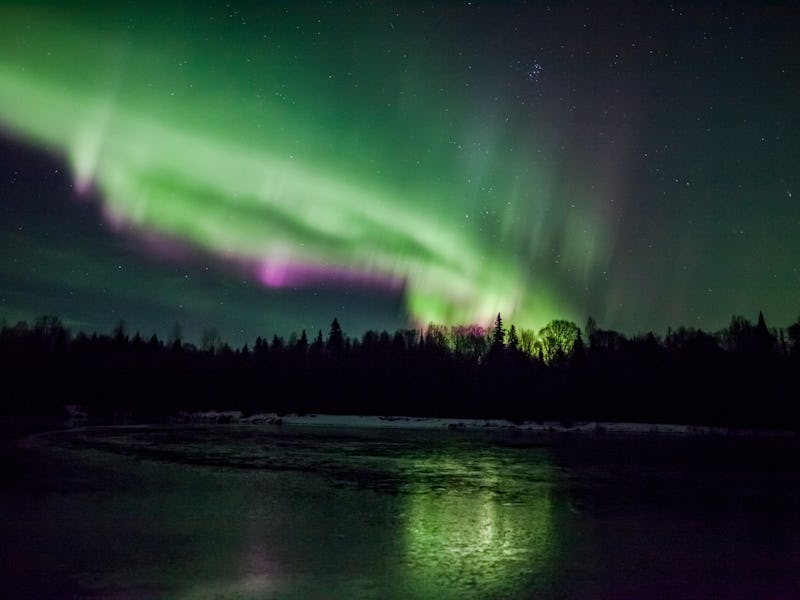In a new study published in Nature Physics on Monday, NASA scientists illustrate a better understanding of how Earth’s magnetic field affects the creation and movement of atmospheric auroras. Data from NASAs Time History of Events and Macroscale Interactions during Substorms (THEMIS) depict how auroras vibrate and dance in relation to magnetic disturbances stretching from the sky to the ground.
“We’ve made similar observations before, but only in one place at a time – on the ground or in space,” said David Sibeck, THEMIS project scientist at NASA’s Goddard Space Flight Center in Greenbelt, Maryland, in a news release. Sibeck, who did not participate in the new study, explained, “When you have the measurements in both places, you can relate the two things together.”
THEMIS is a mission comprised of five different spacecraft, orbiting the planet and capturing sights of some of the most intense magnetospheric activity ever gleaned.
Aurora images from 2013 from the ground looking up with a network of all-sky cameras spread across Canada, studying auroras in collaboration with THEMIS.
Why are auroras of such fascination to scientists? Besides looking, well, amazing — the science behind auroras can help teach us more about the kinds of cosmic material and physics affecting our own planet. An aurora is caused by solar wind hitting Earth’s magnetic field and basically charging up different atmospheric particles – such that they emit energy in the form of ebullient and beautiful light. These kinds of physics affect the type of communications and GPS satellite instruments we rely on daily.
Mapping out the lit-up dance of auroras helps scientists to better understand how magnetic fields themselves move around and where electrical currents are most powerful and concentrated during a geomagnetic storm. With that knowledge, researchers can know in advance what places on Earth might be most susceptible to electromagnetic disturbance.
Overall, the new study confirms an aurora brightens and dims along the 60-minute cycle that magnetic field lines oscillate.
“During the course of this event, the electrons are flinging themselves Earthwards, then bouncing back off the magnetosphere, then flinging themselves back,” said Sibeck.
As THEMIS collects more data, NASA’s researchers (and others) will be able to put more pieces together to finally understand the full picture of how an aurora behaves.
